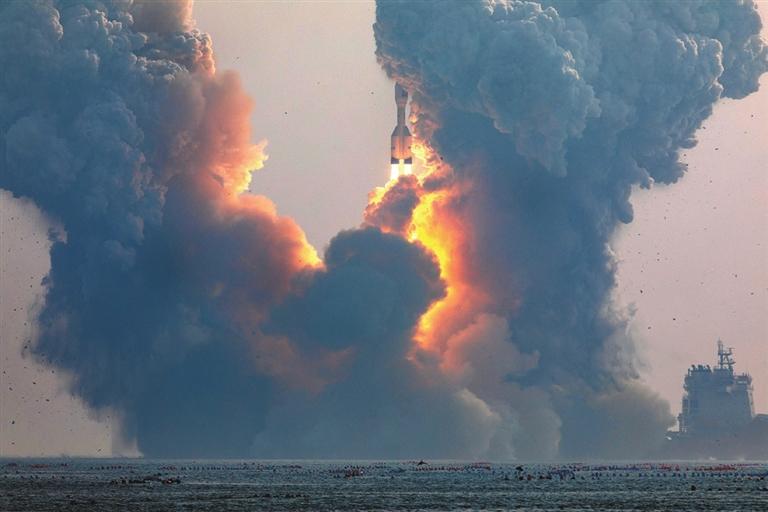
THE Gravity 1 rocket, the world’s most powerful solid-propellant launch vehicle, made its debut flight from China on Thursday, sending three satellites into the planned orbit. The Taiyuan Satellite Launch Center launched the commercial rocket from waters off the coast of Haiyang, East China’s Shandong Province, at 1:30 p.m. (Beijing Time). Developed by Orienspace, a private company in Beijing, the Gravity 1 rocket model consists of three core stages and four boosters, all powered by solid-propellant motors and equipped with flexible swinging nozzles. It has a liftoff weight of 405 metric tons and a liftoff thrust of 600 tons. The rocket is able to send spacecraft with a combined weight of 6.5 tons to a low-Earth orbit, or 4.2 tons to a typical sun-synchronous orbit at an altitude of 500 kilometers, according to Orienspace, which was founded in 2020 by a group of veteran researchers from State-owned space enterprises. The specifications of its overall weight and carrying capacity mean that Gravity 1 is now the world’s mightiest solid-fueled launch vehicle and is also the most powerful rocket to be developed by a private Chinese company. In addition, it is the first and only private rocket in China to have side boosters. It also has the biggest fairing, or nose cone — the top structure on a rocket that contains satellites or other payloads — among the country’s private rockets. Gravity 1’s successful maiden flight also made Orienspace the fifth private Chinese company to have its own carrier rocket, following i-Space, Galactic Energy, Space Pioneer and LandSpace. Orienspace said Gravity 1 is an ideal option for deploying large groups of satellites in low- and mid-altitude orbits or sending large spacecraft into space in emergency response scenarios. The satellites deployed through the launch were built by Changguang Satellite Technology, a State-owned enterprise in Jilin Province, and will be operated by Tianjin Yunyao Aerospace Technology for meteorological analysis and forecasting, spatial environmental detection and ground disaster research and prevention. (China Daily, Xinhua) | 
